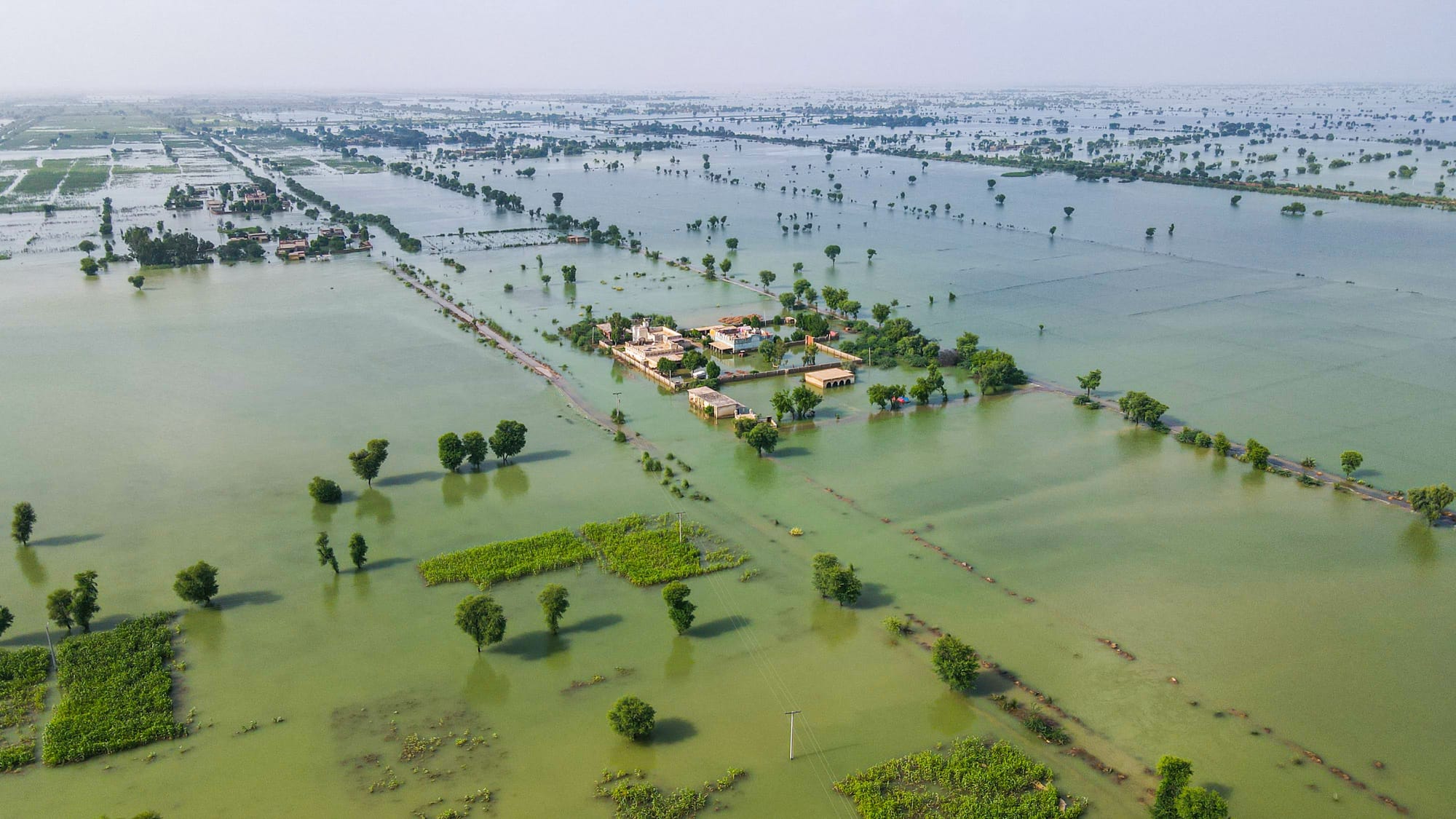The effects of climate change in Pakistan are severe and multifaceted, placing the country among the top 10 globally in terms of vulnerability. Pakistan’s climate vulnerability is deeply intertwined with its diverse geography and climatic patterns. The country experiences a wide range of climates, from the hot and dry coastal regions and lowland plains of the Indus River to the cooler northern uplands and the Himalayas. Recognized for its four distinct seasons—cool, dry winters from December to February; hot, dry springs from March to May; the summer monsoon season from June to September; and the retreating monsoons from October to November—Pakistan’s weather is marked by significant variability.
Hill torrents—a common type of flood that affects Pakistan in the summer monsoon season—are a critical water source for many regions, contributing positively to irrigation and the livelihoods of local communities. However, Pakistan faces significant challenges in managing these torrents effectively, particularly as climate change intensifies weather patterns and exacerbates flooding. A recent paper, based on key stakeholder discussions held earlier in 2024, presents recommendations for policies for managing hill torrents. These recommendations are summarized below.
The Impact of Climate Change on Hill Torrent Management
Pakistan’s geographical diversity and complex climate patterns make the country particularly vulnerable to extreme weather events, such as floods and droughts. The devastating floods of 2022, caused by intense monsoon rains and overflowing hill torrents, highlighted the urgent need for improved management strategies. These torrents, with their rapid and powerful water movements, play a vital role in spate irrigation—a traditional water diversion technology under which seasonal floods are diverted from ephemeral rivers to irrigate fields in the coastal plains. And this irrigation is crucial for the country’s agriculture. Yet this water management system remains underutilized due to frequent challenges in managing water flows and regional variations in infrastructure.
Pakistan’s four provinces—Punjab, Sindh, Khyber Pakhtunkhwa, and Balochistan—each face a complex set of interlinking challenges and opportunities when it comes to managing hill torrents:
- Punjab: In regions such as D.G. Khan and Rajanpur, hill torrents are crucial for spate irrigation but inadequate infrastructure leads to water wastage and recurrent flooding.
- Sindh: Large torrents, known locally as nai, are important for the province’s water supply, but the challenge lies in effectively diverting excessive water to prevent downstream flooding.
- Khyber Pakhtunkhwa: Terrace farming and spate irrigation are common, yet flash floods in the Panjkora Basin pose a significant risk to the population and infrastructure.
- Balochistan: Although it has the highest potential for spate irrigation, Balochistan struggles to manage its diverse torrent systems due to weak infrastructure and lack of effective coordination between stakeholders.

Policy Recommendations
The policy paper proposes various measures to address the critical issues in managing hill torrents. Highlights include:
- Governance and Infrastructure: A coordinated, integrated management system is needed, especially in provinces such as Sindh and Balochistan where gaps between provincial departments hinder water resource management. Improved collaboration between water and agricultural departments, along with consistent policies across regions, will mitigate flood risks. Involving local communities in decision making and equipping them with necessary resources is also vital.
- Climate-Resilient Infrastructure: Building infrastructure that can withstand climate challenges, such as small dams and retention structures, is essential. Nature-based solutions, such as terracing and reforestation, should complement these efforts to enhance ecological resilience.
- Technology and Innovation: The use of machine learning, artificial intelligence, and advanced technology, including remote sensing, GIS, and early warning systems, can improve water management and disaster preparedness. Training disaster response teams and fostering collaboration between relevant agencies are critical steps.
- Community Engagement: Local communities must be involved in planning and decision-making processes. Workshops, educational programs, and forums can help empower communities. Private sector participation should be encouraged by highlighting the economic benefits of sustainable water management projects.
Effective hill torrent management is essential not only for improving water security in Pakistan but also for ensuring the resilience of communities against climate disasters. This comprehensive approach—integrating governance, infrastructure, technology, and community engagement—offers a way forward for policymakers, practitioners, and researchers to address the country’s water challenges.






